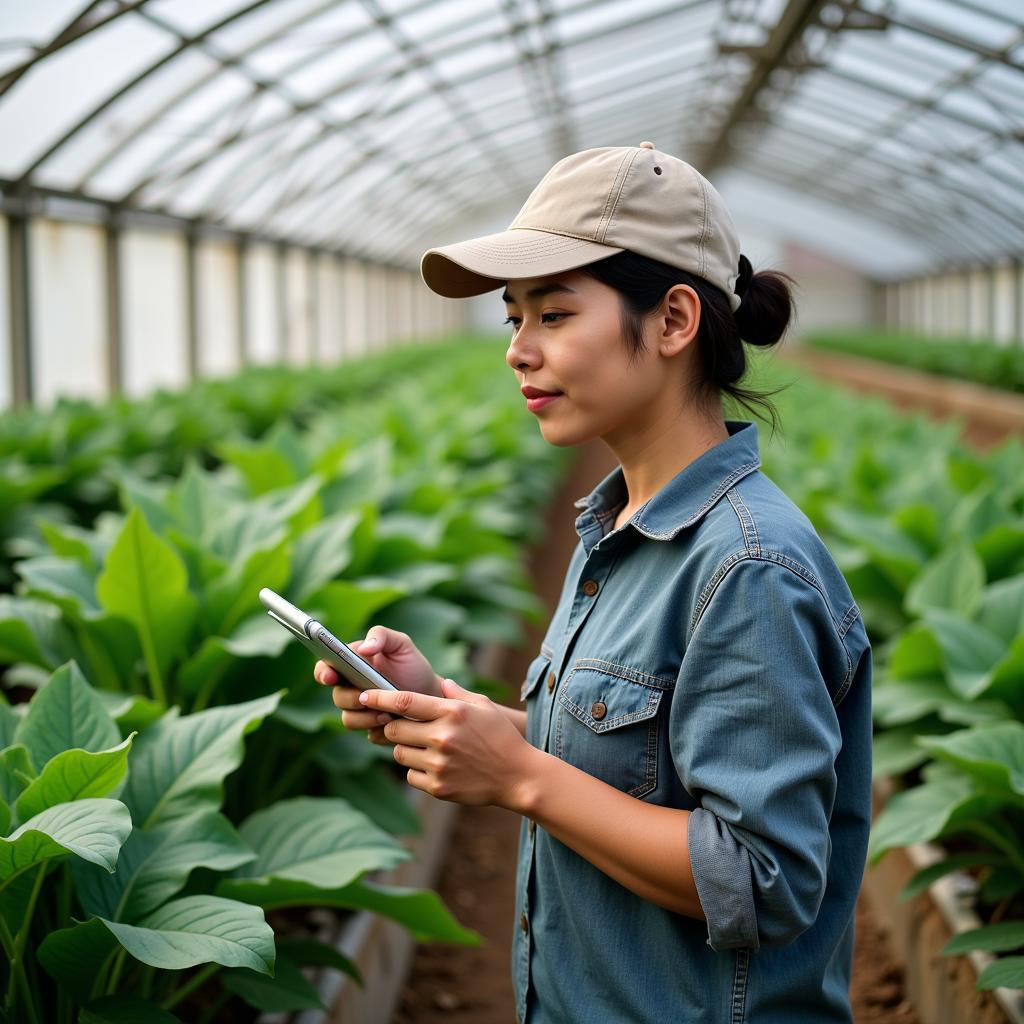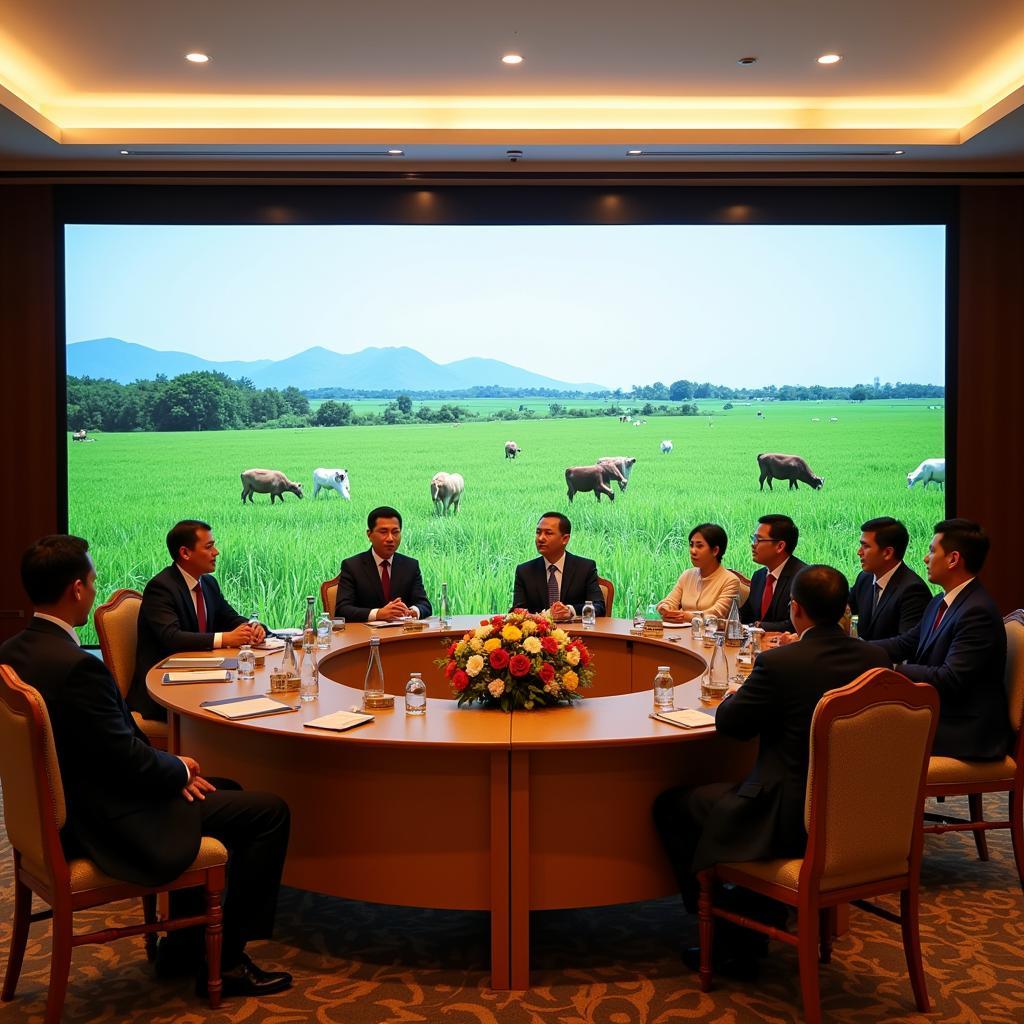Agriculture has been the backbone of Southeast Asia for centuries, shaping its landscapes, cultures, and economies. Today, as the ASEAN region experiences rapid economic growth and urbanization, the agricultural sector stands at a crossroads. “ Farmers tending to rice paddies in Southeast Asia” The challenge lies in harnessing innovation and promoting sustainable practices to enhance productivity, ensure food security, and elevate the livelihoods of millions of farmers across its diverse member states.
Farmers tending to rice paddies in Southeast Asia” The challenge lies in harnessing innovation and promoting sustainable practices to enhance productivity, ensure food security, and elevate the livelihoods of millions of farmers across its diverse member states.
Sowing the Seeds of Innovation
ASEAN recognizes the need to modernize its agricultural practices to meet the demands of a growing population and changing dietary needs. Initiatives like the ASEAN Food Security Information System (AFSIS) and the ASEAN Integrated Food Security (AIFS) Framework demonstrate a regional commitment to enhancing food security through collaboration and knowledge sharing. These platforms facilitate the exchange of best practices, data, and technology to address challenges related to food production, distribution, and access.
“ Implementation of agricultural technology on a farm in Southeast Asia” Investing in agricultural research and development is crucial for developing climate-resilient crops, improving livestock breeds, and optimizing resource utilization. The International Rice Research Institute (IRRI) in the Philippines, for instance, plays a pivotal role in developing high-yielding and disease-resistant rice varieties, contributing significantly to food security not just within ASEAN but globally.
Implementation of agricultural technology on a farm in Southeast Asia” Investing in agricultural research and development is crucial for developing climate-resilient crops, improving livestock breeds, and optimizing resource utilization. The International Rice Research Institute (IRRI) in the Philippines, for instance, plays a pivotal role in developing high-yielding and disease-resistant rice varieties, contributing significantly to food security not just within ASEAN but globally.
Cultivating Sustainable Practices
The impact of climate change is increasingly evident in Southeast Asia, with extreme weather events such as droughts and floods posing significant risks to agricultural production. ASEAN is actively promoting climate-smart agriculture (CSA) to mitigate these risks and build resilience within the sector. CSA encompasses a range of practices, including water-efficient irrigation systems, conservation agriculture, and the use of drought-tolerant crop varieties.
Furthermore, there’s growing awareness of the environmental impact of conventional agriculture. The excessive use of chemical fertilizers and pesticides can lead to soil degradation, water pollution, and biodiversity loss. ASEAN is encouraging the adoption of organic farming methods, integrated pest management, and other eco-friendly practices to promote sustainable agricultural intensification.
Reaping the Benefits of Collaboration
ASEAN’s diverse agricultural landscape presents both opportunities and challenges. While some countries excel in rice production, others specialize in tropical fruits, palm oil, or aquaculture. This diversity allows for intra-regional trade and specialization, enhancing food security within the region.
“ Delegates at an ASEAN agricultural summit” However, differences in regulations, standards, and infrastructure can hinder trade and investment. ASEAN is working towards harmonizing agricultural policies and standards to facilitate smoother cross-border trade and attract foreign investment in the sector. Initiatives like the ASEAN Single Window (ASW) aim to streamline customs procedures, reducing trade barriers and transaction costs.
Delegates at an ASEAN agricultural summit” However, differences in regulations, standards, and infrastructure can hinder trade and investment. ASEAN is working towards harmonizing agricultural policies and standards to facilitate smoother cross-border trade and attract foreign investment in the sector. Initiatives like the ASEAN Single Window (ASW) aim to streamline customs procedures, reducing trade barriers and transaction costs.
Harvesting a Brighter Future
The future of ASEAN agriculture is intertwined with its ability to embrace innovation, sustainability, and regional collaboration. By investing in research, promoting climate-smart practices, and fostering closer ties among its member states, ASEAN can ensure a more resilient and prosperous agricultural sector for generations to come.
The growth of ASEAN agriculture goes beyond simply feeding its people; it plays a vital role in poverty reduction, rural development, and overall economic growth. By empowering farmers, particularly women and youth, through access to technology, finance, and markets, ASEAN can unlock the full potential of its agricultural sector and pave the way for a more sustainable and inclusive future.
FAQs about ASEAN and Agriculture
1. What are the major agricultural products of ASEAN?
ASEAN countries are major producers of rice, palm oil, rubber, coffee, cocoa, and tropical fruits, among others.
2. How is climate change affecting ASEAN agriculture?
Climate change is leading to more frequent and severe droughts, floods, and changes in rainfall patterns, all of which impact agricultural yields and threaten food security in the region.
3. What is ASEAN doing to promote sustainable agriculture?
ASEAN is encouraging climate-smart agriculture, organic farming methods, and integrated pest management to reduce the environmental impact of agriculture.
4. How can I invest in the ASEAN agricultural sector?
Investment opportunities exist in areas such as agricultural technology, food processing, logistics, and cold chain infrastructure.
5. Where can I find more information about ASEAN agriculture?
The ASEAN Secretariat website and the websites of organizations like the ASEAN Farmers’ Organization (AFA) and the Southeast Asian Regional Center for Graduate Study and Research in Agriculture (SEARCA) offer valuable resources.
Need More Information?
If you need further assistance, please feel free to contact us:
Phone Number: 0369020373
Email: [email protected]
Address: Thon Ngoc Lien, Hiep Hoa, Bac Giang, Vietnam.
Our customer support team is available 24/7 to answer your queries.
